An Product Environmental Declaration (EPD) is an ISO Type III Environmental Declaration based on ISO 14025 standard. An EPD transparently reports the verified environmental performance of products or services from lifecycle perspective. The preparation of an EPD includes different stages, from acquiring raw materials to the end of life of the final product/service. EPDs are based on international standards and consider the entire value chain.

Contents:
Toggle- Benefits of EPD
- We work with the following organisations to publish EPDs:
- Why Metsims?
- Globally Focused
- Turkey Market Leader
- Turkey Sector Leader
- Quick Service Time
- 'Confirmatory' Perspective
- Globally Focused
- Turkey Market Leader
- Turkey Sector Leader
- Quick Service Time
- 'Confirmatory' Perspective
- What are the processes of an Product Environmental Declaration project?
- 1. Data Collection
- 2. LCA modelling and calculation
- 3. Reporting and preparation of EPD
- 4. Verification
- 5. Publication
- Some Product Environmental Declaration Works
- EPD References
- Meet our Product Environmental Declaration Consultants
- What is a Product Environmental Declaration (EPD)?
- Why are EPDs important?
- How is an EPD developed?
Benefits of EPD
-
Provides solid understanding of the environmental impacts of entire supply chain.
-
Helps to get noticed and differentiates the product/service in the market.
-
Provides like-to-like basis for comparability of the products.
-
Helps architects and engineers during building material selection.
-
Helps to earn additional points under green building and infrastructure rating systems (e.g., LEED, BREEAM, DGNB).
We work with the following organisations to publish EPDs:

The International EPD System - IES

EPD Türkiye

Institut Bauen und Umwelt e.V. – IBU

BRE

Framework for the Development of Environmental Statistics - FDES

EPD Italy
Why Metsims?
Globally Focused
As Metsims, we carry out EPD studies globally, especially in the UK, Germany, Israel, Bahrain, USA, Kuwait, China.
Turkey Market Leader
More than 50% of the EPDs published through EPDTürkiye bear the signature of Metsims.
Turkey Sector Leader
The market share of Metsims among construction materials EPDs in Turkey is around 60%.
Quick Service Time
The average project completion time from inception to publication of an EPD project is approximately 12 weeks.
'Confirmatory' Perspective
Dr Hüdai Kara, founder and managing director of Metsims, is an approved independent verifier for the International EPD System, EPD Australasia and ZAG EPD System Slovenia.
Globally Focused
As Metsims, we carry out EPD studies globally, especially in the UK, Germany, Israel, Bahrain, USA, Kuwait, China.
Turkey Market Leader
More than 50% of the EPDs published through EPDTürkiye bear the signature of Metsims.
Turkey Sector Leader
The market share of Metsims among construction materials EPDs in Turkey is around 60%.
Quick Service Time
The average project completion time from inception to publication of an EPD project is approximately 12 weeks.
'Confirmatory' Perspective
Dr Hüdai Kara, founder and managing director of Metsims, is an approved independent verifier for the International EPD System, EPD Australasia and ZAG EPD System Slovenia.
What are the processes of an Product Environmental Declaration project?
1. Data Collection
The first step of the EPD project aims to obtain the required data accurately. Metsims creates product-specific data collection templates to collect all the necessary information for LCA calculations.
2. LCA modelling and calculation
Once all the necessary data has been collected, Metsims develops an LCA model for the product(s) under study using dedicated data sources prepared in accordance with ISO 14040/44 and EN 15804 standards.
3. Reporting and preparation of EPD
The LCA analysis reveals the environmental impacts of the different value chains of the product. The results of the LCA study, together with detailed technical information, form the main structure of the LCA report that Metsims uses to communicate with the verifier. In addition to the LCA report, a company-specific EPD document is prepared in accordance with the rules and guidelines of the EPD programme operators.
4. Verification
At this stage, the LCA report and EPD are sent to a third party independent verifier. Metsims carries out the communication processes of its customers with the verifier. At the end of the verification process, the verifier generates a verification report confirming the compliance of the EPD with the publication.
5. Publication
Metsims prepares the necessary documents for publication and sends them to the publisher. Upon completion of the registration process, the verified EPD is published in the system.
Some Product Environmental Declaration Works
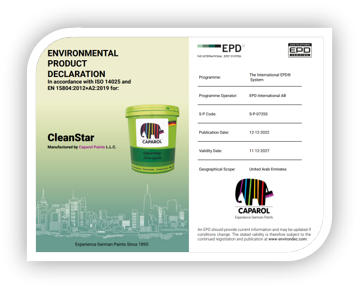
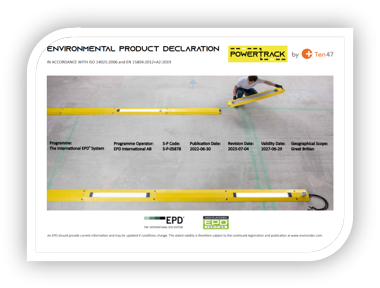
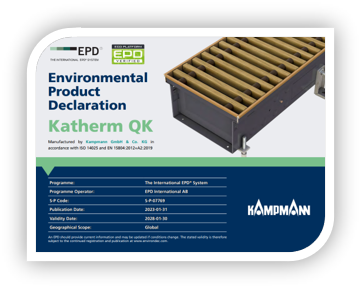
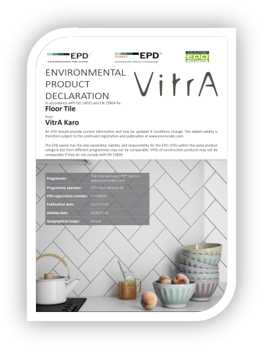
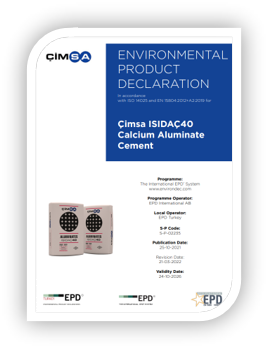
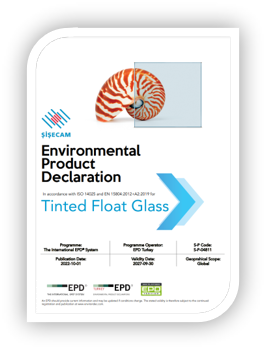
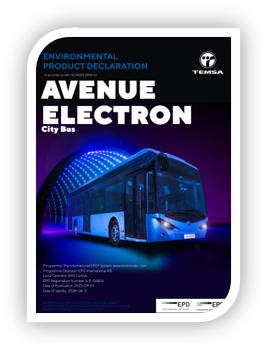
EPD References
- ADOCIM Cement, Türkiye
- AGT Wood Industry, Türkiye
- Akcansa Cimento Sanayi ve Ticaret AS, Türkiye
- AKG Gazbeton, Türkiye
- Al Taiser Aluminum Company, Saudi Arabia
- Albond, Türkiye
- Alçıbay, Türkiye
- Berger Paints Emirates Ltd., United Arab Emirates
- Boskay Metal, Türkiye
- Burak Aluminium, Türkiye
- CableMar, Türkiye
- Caparol Paints, United Arab Emirates
- Creavit, Türkiye
- Çimsa., Türkiye
- Dalsan, Türkiye
- Dubai Plaster Dry Mix L.L.C, United Arab Emirates
- Eczacıbaşı Construction Products, Türkiye
- Emek Pipe, Türkiye
- EMR Group, United Kingdom
- Enviro Acoustics, Australia
- Ergin Makine, Türkiye
- European Metal Recycling, United Kingdom
- Fırat Plastik, Türkiye
- Gaziantep Ytong, Türkiye
- GIPS A.Ş., Türkiye
- Graniser, Türkiye
- Grants of Shoreditch, United Kingdom
- Hasçelik Kablo, Türkiye
- Hekim Construction, Türkiye
- Hydromx International, United States
- Ideal Ceramics, Türkiye
- Istanbul Plant, Teknopanel
- JBH Soft Furnishings, United Kingdom
- Kalekim, Türkiye
- Kaleseramik, Türkiye
- KAMPMANN, Germany
- Kastamonu Integrated Wood Industry, Türkiye
- Koleksiyon Furniture, Türkiye
- Kordsa, Türkiye
- Korteks, Türkiye
- Kuwait Cement Company, Kuwait
- KYK Construction Chemicals, Türkiye
- MedCem Cement., Türkiye
- Midal Cables, Türkiye
- Midal Mozambique, Mozambique
- Minotti Dry Mix Factory, United Arab Emirates
- Mitaş Industry, Türkiye
- Mitaş Kompozit, Türkiye
- Mortar & Plaster Dry Mix L.L.C, United Arab Emirates
- MyFix Construction Chemicals, Türkiye
- NG Kütahya Ceramics Inc., Türkiye
- Novum Structures, United Kingdom
- NOVUS 48 Limited, United Kingdom
- ODE Insulation, Türkiye
- ORMA Wood, Türkiye
- Ozdemir Boru Profil AS, Türkiye
- Özkan Iron&Steel, Türkiye
- Plaxit Dry Mix L.L.C, United Arab Emirates
- Polisan Kimya, Türkiye
- Polisan Paints, Türkiye
- Project:ffe, United Kingdom
- Pulver Chemicals, Türkiye
- RAKFix L.L.C, United Arab Emirates
- Readymix Industries (Israel) Ltd., Israel
- Sakarya Plant, Teknopanel
- SARAY Aluminium Inc., Türkiye
- Saray Aluminium, Türkiye
- Seranit Granit Ceramics Inc., Türkiye
- SEREL Ceramics, Türkiye
- Silkar, Türkiye
- Sofap Ltd., Mauritius
- Step Carpet, Türkiye
- Subor Boru, Türkiye
- Süperlit, Türkiye
- ŞİŞECAM, Türkiye
- Tuna Aluminium, Türkiye
- Türk Ytong Sanayi A.Ş., Türkiye
- Uğur Metal Sanayi (UMS), Türkiye
- Valfsel Armatür Sanayi A.S., Türkiye
- Viridian Solar, United Kingdom
- Vitra Sanitaryware, Türkiye
- Vitra Tiles, Türkiye
- Batıçim, Türkiye
- Çayırova Boru, Türkiye
- Teknopanel, Türkiye
- Temsa, Türkiye
- Yurtbay Seramik, Türkiye
- Yücel Boru, Türkiye
Meet our Product Environmental Declaration Consultants
Orhan Atacan
Sustainability Manager
Yıldıray Yılmaz
Senior Sustainability Advisor
Gülbahar Korkusuz
Senior Sustainability Advisor
Jyoti Jyotsana
LCA Consultant
Furkan Can Akalın
Sustainability Consultant
Ayşegül Büyükkıdık
Sustainability Project Associate
What is a Product Environmental Declaration (EPD)?
A Product Environmental Declaration (EPD) is a comprehensive document that provides transparent and verified information about the environmental impacts of a product throughout its life cycle. It presents data on various environmental aspects, such as resource use, energy consumption, emissions to air, water, and soil, and waste generation.
Why are EPDs important?
EPDs serve several purposes:
- They provide transparent and standardized information about the environmental performance of products, enabling consumers, businesses, and policymakers to make informed choices.
- EPDs allow for the comparison of different products within the same product category based on their environmental impacts, facilitating sustainable purchasing decisions.
- They assist manufacturers and designers in identifying opportunities to reduce environmental impacts, optimize product design, and improve resource efficiency.
- EPDs enable companies to communicate their environmental performance to stakeholders, demonstrating commitment to sustainability and corporate responsibility.
- EPDs may be required by governments, industry associations, or certification schemes as a condition for market access or participation in procurement processes.
How is an EPD developed?
The process of developing an EPD involves several steps:
- Goal and Scope Definition: Defining the objectives and boundaries of the EPD, specifying the product category, functional unit, system boundaries, and data requirements.
- Life Cycle Inventory (LCI): Collecting data on inputs (e.g., materials, energy) and outputs (e.g., emissions, waste) associated with each stage of the product’s life cycle.
- Life Cycle Impact Assessment (LCIA): Assessing the environmental impacts of the product using impact assessment methods to evaluate factors such as climate change, resource depletion, human health, and ecosystem quality.
- Verification: Verifying the EPD by an independent third party to ensure compliance with relevant standards and accuracy of the data.
- Publication: Publishing the finalized EPD and making it publicly available, typically through online databases or platforms, to enable stakeholders to access and use the information.

